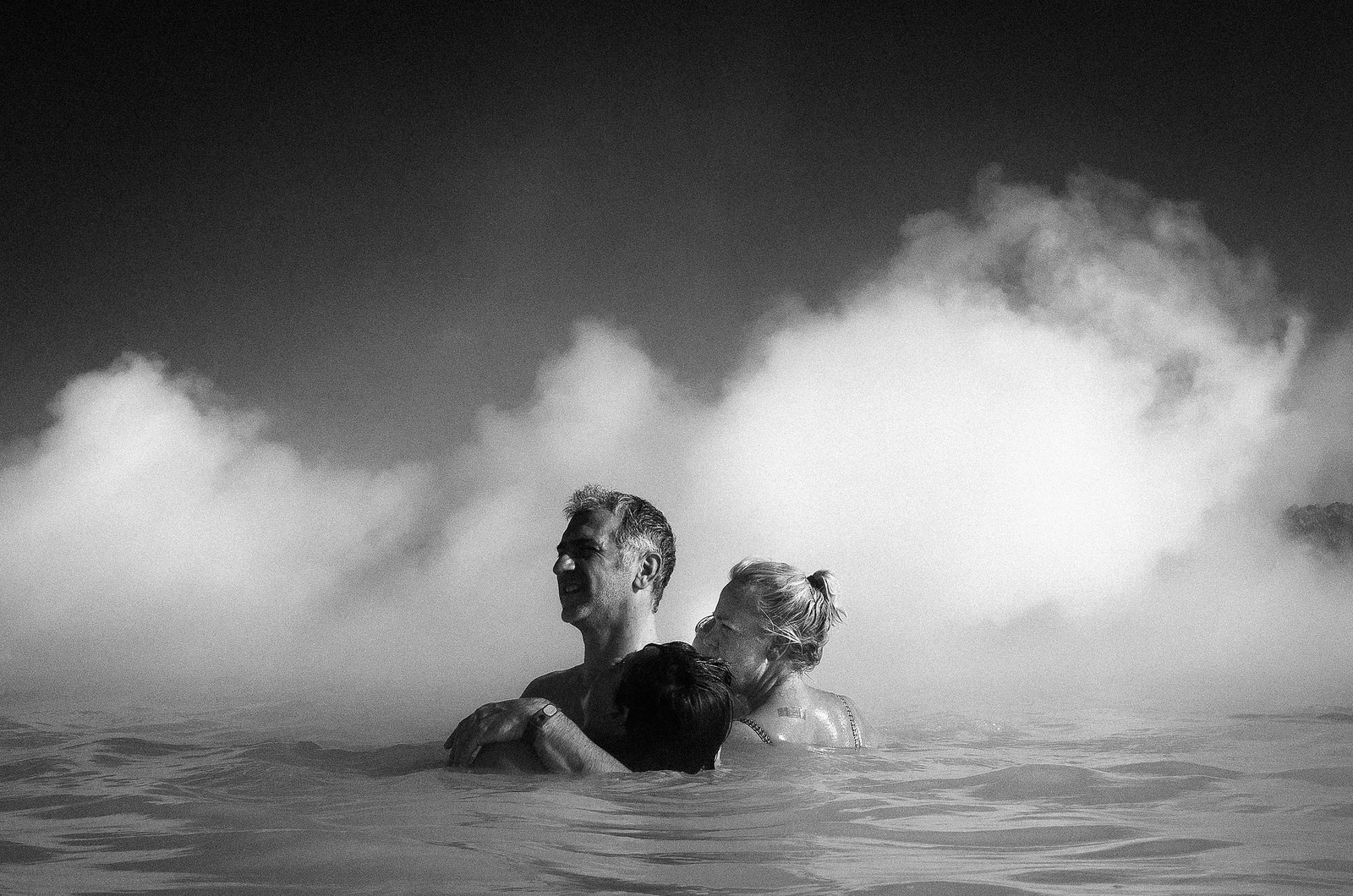
The Ricoh GR 4-Year Review! A Camera For Your Life
By Ashwin Rao
Dear friends and fellow photographers, today I am coming to you with a different type of review. Whereas most camera reviews are based off a few days to weeks of shooting experience, such reviews do not benefit of prolonged shooting experience. I myself have written a number of such reviews of Leica cameras, but from time to time I have come back to re-review such cameras after many months of experience. Time is such a valuable gauge of one’s photographic habits and needs. I am guilty of trying many different systems, sometimes to a fault. I have been an enthusiastic supporter of brands such as Leica, Canon, Nikon, Fuji, and Sony, but generally most of these camera systems come and go in the Rao household, while the Leica system stays in place. I have not spoken or written much about my lengthy experience with Ricoh cameras, which I feel are some of the most under-rated cameras out there, and which I have owned continuously for many years now. Hindsight, as they say, is 20-20, and in my home a Ricoh GR has been here all along.
The GR system has been a near constant companion as I have moved to and from other gear over the past four years. The compactness and form factor of the GR has allowed me to take the camera literally everywhere, and the camera never gets in the way, never weighs me down, and is always ready at a moment’s notice. Why have I yet to review a camera that I have enjoyed for 4 years? Maybe I simply take the camera for granted? Maybe, I felt the review window for such a camera was well past. After all, a number of talented pro photographers have already discussed the camera in detail. Maybe it is simply time to sit down and discuss the Ricoh GR, which remains one of the best photographic tools for professional photographers and photo hobbyists alike.
I call the Ricoh GR a “Life” camera. It is small and discrete enough to be one one’s person at nearly all times. It has been by my side at my wedding, during family trips, at work, and for social gatherings. The images I have here should give you a sense of my “life”, since the GR has been there to record some of my most special moments, from my marriage to Super Bowls to life’s gentler and more subtle moments. The form, fit, finish, and function of the Ricoh GR makes it an invaluable tool for anyone who wishes to document day to day life in its true form. I often think of the GR as an extension of my own vision, and in this manner, it has become a constant extension of my photographic style and evolution over the past 4 years. For those of you who welcome being challenged, who are willing to put aside their lust for the latest and greatest camera system, the Ricoh GR will suit your needs incredibly well. Read on, and let me try to convince you….
What is the GR?
By now, the specifications of the Ricoh GR and the GR2 are no surprise. The modern digital iterations of the venerable GR line sport 16 megapixel APS-C CMOS sensors and sport a 18.3mm (28mm equivalent) f/2.8 lens. While some may feel limited by the lower megapixel count the GR’s sensor is uniquely suited both to its personality. It keeps file sizes reasonable, has really solid dynamic range, has no anti-aliasing filter (hence, images produced are bitingly sharp), is capable of holding up in low light situations, and is great for color and BW imagery. Truth be told, 16 megapixel sensors will also permit prints at excellent resolution up to 13-19 inches, and one can great a nice quality print as large as 24-36 inches as long as you are not expecting medium format clout. Given that many of us would never print larger than this, the GR print and file sizes should suffice for most photographic needs.
The GR has remained one of the only pocketable APS-C cameras on the market since its release. It weighs 245 g, which is less than the weight of most SLR or mirrorless lenses! The camera’s 28mm equivalent focal length makes it an ideal tool for street photography, capturing both subject and surroundings with ease, and optically, the GR’s particular 28 mm lens is nearly unparalleled in terms of sharpness and rendering.
The 28mm focal length has become synonymous with photography with the ever-growing market of cell phone photography, as most cell phones come equipped with at least a 28mm lens, given that focal length’s for capturing life’s moments in a manner similar to the human eye’s perspective. The GR and GR2 come equipped with solid focusing algorithms that make the camera “reasonably” fast to autofocus and capture moments as they happen, particularly in well-lit settings. For those who want even more prompt focus, a “snap focus” mode allows the photographer to capture images instantaneously by setting a narrower aperture and specified focusing zone. This technique essentially allows the photographer to zone focus. The combination of the GR’s capable, large sensor, compact body, autofocus and manual focus capabilities, and customizability make the Ricoh GR a particular favorite among photographers who enjoy capturing life on the street.
The Cult of the Ricoh GR
For those of you willing to do a deep dive online in reading up on the Ricoh GR, you will find that there’s a growing cult that surrounds the camera. The GR is revered in many circles of both amateur and professional photographers. It’s imaging capabilities, clean and sharp files, its intuitive and versatile menu layout, and its fantastic abilities as a street camera have garnered it universal praise. Photographers such as Eric Kim, Ming Thein, Thomas Stanworth, and many others have put aside their SLR’s, medium format systems, and rangefinders in favor of the GR. You will read these reviews and hear of how nice it is to be limited, and how such limitations (one camera, one lens) will focus you on the subject matter. You will read that the GR gets out of the way and that its lens unparalleled. You will read that megapixels become unimportant suddenly when find the images that you come away with have a certain sparkle and magic….
What you will also find are incredible images. Most of are passionate about the GR have come to it with great experience, and come away with even greater wisdom regarding their shooting style and tendencies. Their focus on technique, their ability to approach their subject without the “threat” of a larger camera tends to preserve the context of the photo. Most people being photographed will not take the GR seriously, will not be intimidated, or may not even notice the extra intrusion. The photographer becomes the observer, and the GR becomes that extra set of eyes that allows the photographer to freeze the decisive moment. The 28 mm focal length requires the photographer to step into the scene, presenting its own challenges. This is not a camera for someone who wishes to observe the scene from a distance. Should you adapt to this way of seeing, suddenly the GR becomes a dynamic tool that is hard to ever leave at home. After all, it easily fits in your pocket and stays out of the way until it is needed….
For many, the concept of the GR represents an ideal for photography. It is a discrete, powerful tool, capable of capturing moments in a dynamic, yet realistic way. Suprisingly, many cameras fail to meet the parameters that the GR handles easily, and thus, the cult of the GR lives on.
What are its strengths?
Price: The Ricoh GR is not a costly camera by the measure of most of you reading this blog. As of this writing, the GRII retails at most vendors for $560. As it has been available for 2 years, demand is limited and the camera can be readily acquired online or from any number of authorized dealers.
Form factor: The GR is tiny, when compared to nearly any other APS-C camera out there. Fuji offers the X100F and X7, which are touted as pocketable, but the GR is substantially smaller. Similarly, Leica and Panasonic offer up their D-Lux and LX100, which are essentially the same camera (with different firmware), but both tout a smaller m4/3 sensor and larger body. While I would consider the D-Lux, LX100, X100F and X70 to be “jacket pocketable”, the GR is “pants pocketable” as long as you are not wearing skinny jeans.
Lens: The Ricoh GR and GRII’s 28 mm f/2.8 lens is a thing of legends for those who use the cameras and know its output. Images demonstrate incredible sharpness on center even wide open, and edge-to-edge sharpness if one stops down to f/4. The lens features a 9-bladed rounded aperture, so what bokeh is possible at 28 mm is quite pleasant. Further, the lens is incredibly compact and retracts into the body when the camera is turned off, making the camera all the more compact.
Sensor: The Ricoh GR and GRII’s sensor is perfectly mated to the lens. While some might consider the sensor’s lower megapixel count to be a weakness, I find it to be well suited to its role in my kit as a companion camera. Keeping the megapixel count down a bit lens itself to a better noise profile, and the GR’s sensor noise is reasonable through ISO 3200, and images remain quite sharp at these higher ISO ranges. Further, the GR’s sensor smartly forgoes an anti-aliasing (AA) filter, thus providing an extra level of sharpness to images.
Uniqueness: Whenever I accumulate too much gear, I look for redundancies. Oftentimes, in the excitement of trying out new cameras, many of us are prone to duplicating our kit, in terms of form and function. Given the Ricoh GR’s properties (size, form, function), it is a camera without a peer. It is so small that it would easily travel alongside other, larger, “more serious” system cameras such as a Sony or Olympus mirrorless rig, a Leica rangefinder kit, or even a Nikon/Canon SLR set up. The GR is easy to throw in the bag, and if you have it, you’ll find reasons to shoot it in circumstances where using you larger kit us not possible.
What are the hang-ups?
The 28 mm lens is not for everyone – Well, the Ricoh GR is not the perfect camera for everyone. Many photographers are bonded to the 35mm of 50mm focal length, and 28mm does not always go over well. For example, the 28mm focal length can distort and contort portraits if you step too close to the subject. Further, the lens has a maximum aperture of f/2.8, meaning that it’s somewhat limited in poorly lit circumstances.
Autofocus – The GR sports adequate autofocus, but I would not call it fast. For fast moving action such as sports or in low light setting, it may not be able to acquire focus very rapidly. Some will perceive a subtle lag between shutter click and focus, so if you wish to avoid this, switch over to snap focus. That being said, the focusing accuracy of the GR is quite remarkable. It produces sharp images that never cease to amaze me, particularly given that camera’s seemingly humble form factor.
Sensor: We already discussed megapixel counts above, and this does not need to be belabored. 16 megapixels may be limiting to some of you, but for most, the sensor’s megapixel count will allow you to produce adequate prints at even large print sizes (13×19 inches or greater). If you must have higher megapixel counts, please look elsewhere.
No interchangeable lenses or zoom: Finally, the Ricoh GR is not an interchangeable lens camera, nor was it ever intended to be. For those of you looking for versatility of an ILC system, look elsewhere. It is not equipped with a zoom lens, and excessive cropping can lead to smaller file sizes and digital artifacts.
For me, many of the GR’s limitations are in fact strengths. The GR forces me to work within its parameters. I never have to bother with lens switches. The deeper depth of field given the focal length and aperture, force me to keep an eye on my surroundings and the context of each photo. I need to be aware of my photographic circumstances to know how to capture the moment, how to position myself, or when to hand the camera off for a quick candid of me. For me, it’s a perfect autofocus companion to my Leica M system, and for others, it will serve as a highly compact companion for those who use SLR or mirrorless cameras.
Ricoh GR versus GRII
I owned the Ricoh GR for 3 years, and for the past year, I moved to the Ricoh GRII. How are these cameras different? The cameras possess the same sensor, nearly the same build, and the same lens. The GRII incorporates Wi-Fi, which can permit remote control and operation of the camera. For those of you who use Android phones, the GRII providers NFC technology. The GRII permits a slightly faster max shutter speed of 1/2500 and has a bigger buffer which permits the capture of up to 10 consecutive RAW files at a maximum burst rate of 4 FPS. While that’s not exactly the Sony A9 or Nikon D850, it will suffice for most spontaneous photographic needs.
For those of you who shoot JPEG’s (I do not), the GRII offers several extra effect modes that are not available in the GR.
For my uses, the GR and GRII are essentially identical. If you happen to find a great deal on the GR that saves you a few bucks, go for that camera. At the moment, most vendors still carry the GRII and you are guaranteed a newer camera if you go in this direction.
Dependability
Both the Ricoh GR and GRII have been highly dependable cameras for me over the past 4 years. In fact, I have never had the camera freeze up, malfunction, or have any issue at all. The cameras are durable, and their build makes them seem nearly indestructible. My cameras have ended up at the bottom of my backpack on many occasions, and they always come out unscathed.
Battery life is plenty adequate. I typically get between 400 and 600 images from a single charge, and while I keep a back up battery available, I have rarely needed to use it.
Accessories
The Ricoh GR and GRII system includes a few accessories worth considering. For those of you who do not like to use the rear LCD screen for composition, Ricoh-Pentax offers 2 optional accessory viewfinders. One (GV-2) offers only 28mm frame lines, while the other (GV-1) finder offers both 21mm and 28 mm frame lines. Why would Ricoh offer two such viewfinders, you ask?
Ricoh also provides us with a GW-3 Wide angle conversion lens, which, when attached using a additional GH-3 lens adapter, turns the GR’s optic into a 21mm f/2.8 lens, at the cost of adding considerable bulk. For those of you who like to shoot wide, the GW-3 conversion lens is really good and does not degrade the image at all. It is not, however, the most convenient of accessories, and I rarely use it as a result.
Finally, Ricoh offers a few case accessories, including a GC-5 leather case and GC-6 half case. While I prefer to shoot the camera “naked”, cases offer additional protection and fashioned from leather.
Final words
In this review, I have shared thoughts borne from four years of consistent camera use. I have used the Ricoh GR and GRII cameras during this time and consider them to be effectively the same camera. The images that I have presented were all shot with the GR cameras, and I have presented both color and BW images in an effort to show you what I have written and what I feel: that the Ricoh GR and GRII are highly capable cameras that are worthy of your consideration.
Thank you as always for your consideration, and I do certainly hope to meet you down the road, camera in hand.
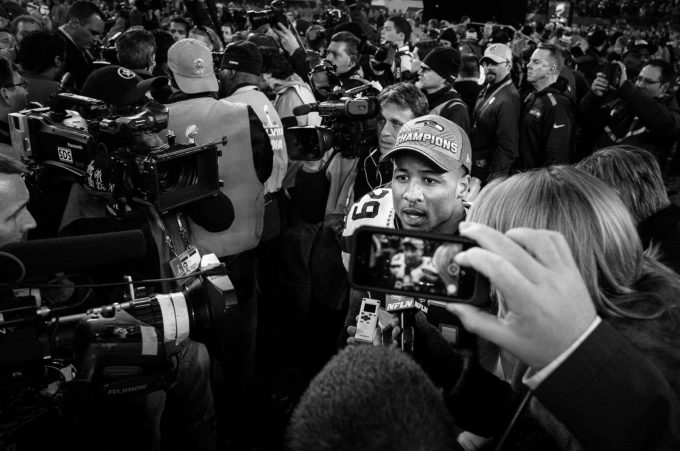
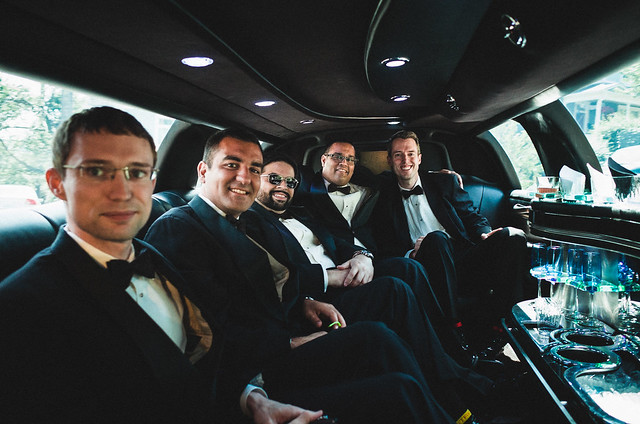

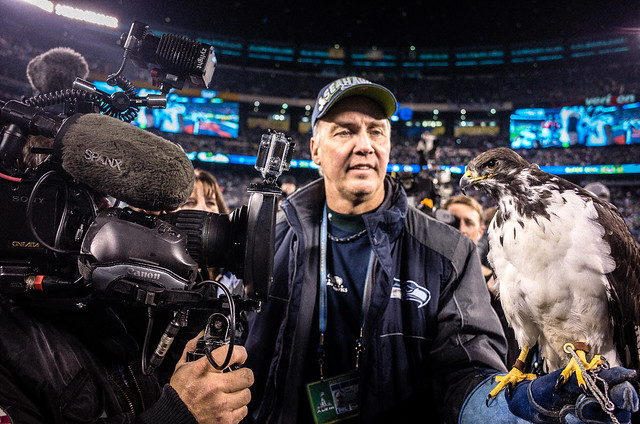

https://www.flickr.com/photos/ashwinrao1/39272735782/sizes/l
You can buy the GR and GRII at Amazon HERE.

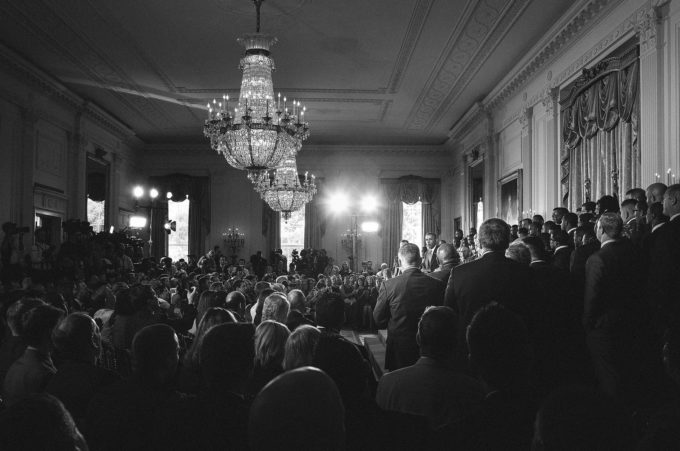
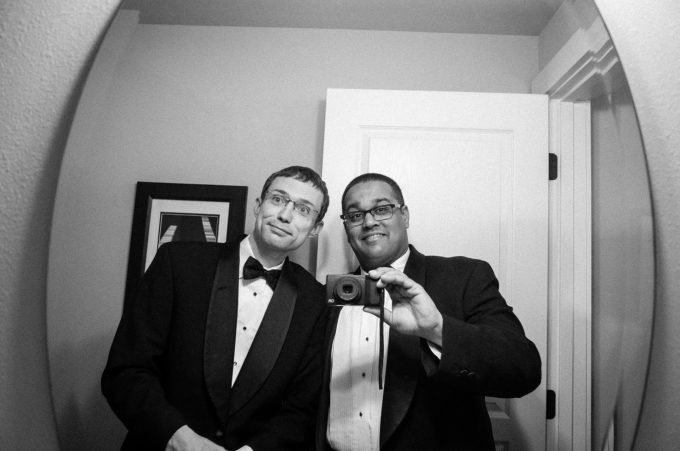
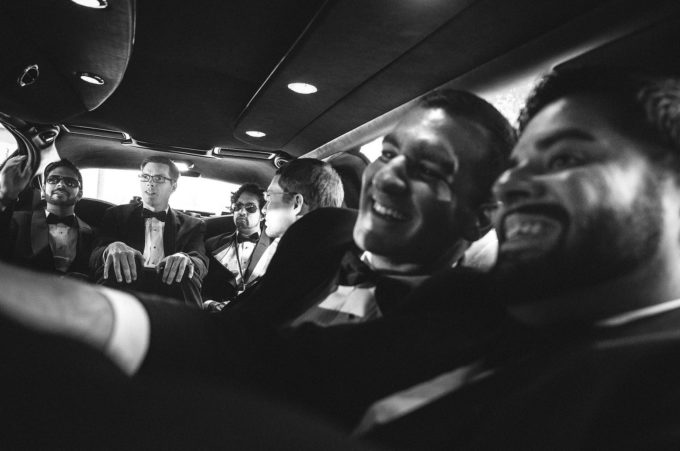

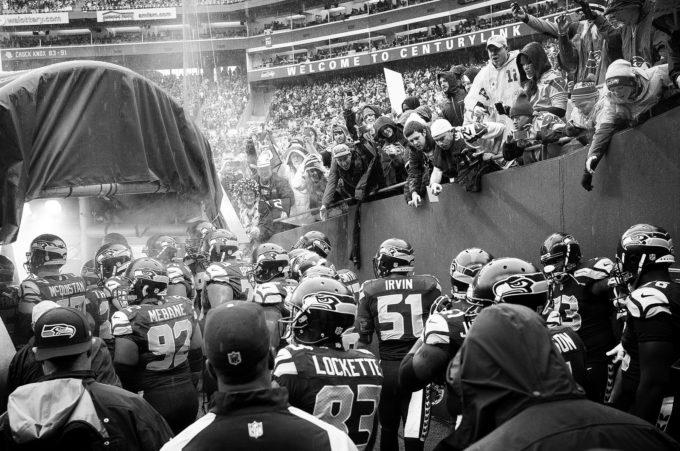

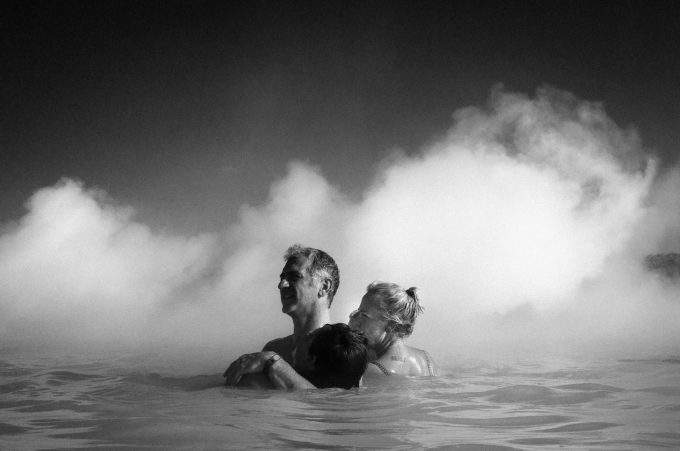
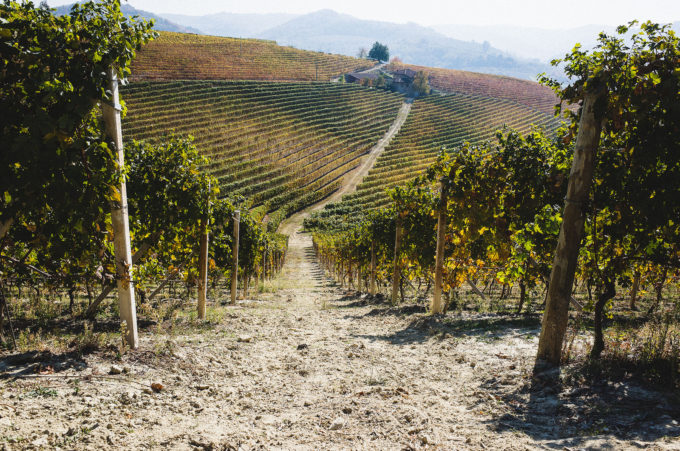

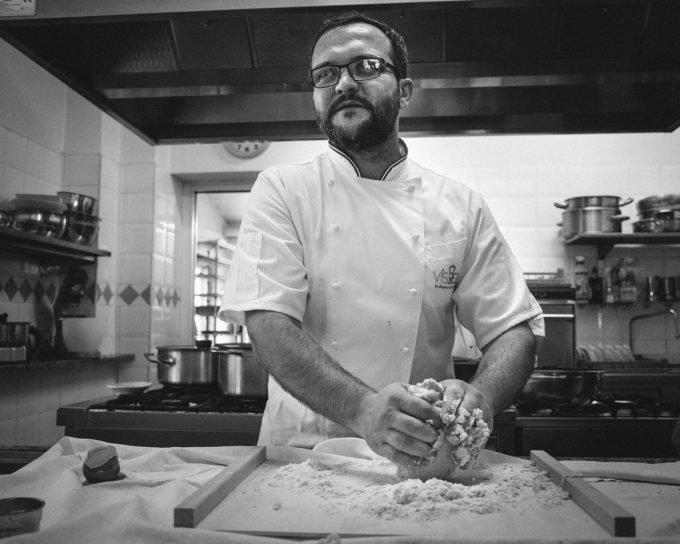
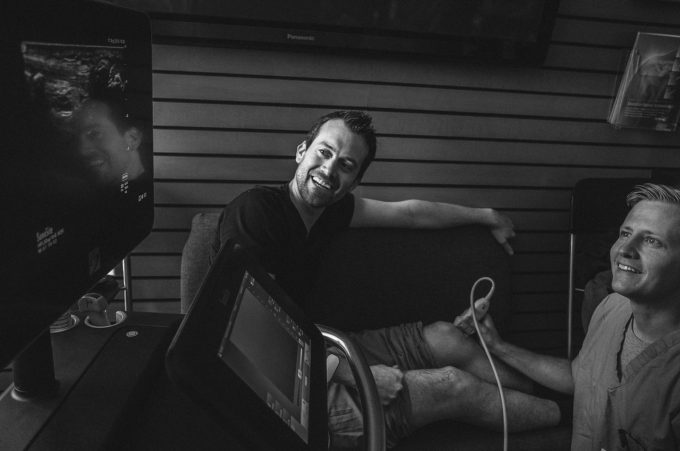
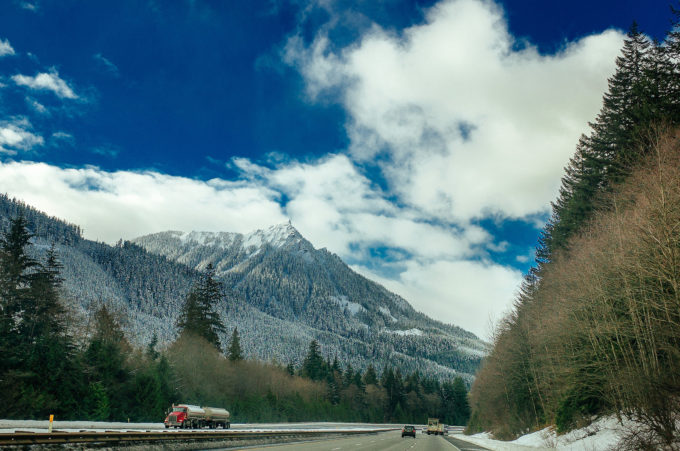

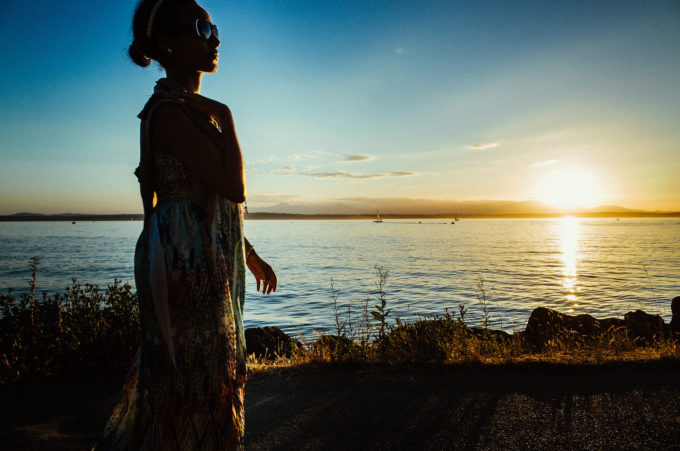

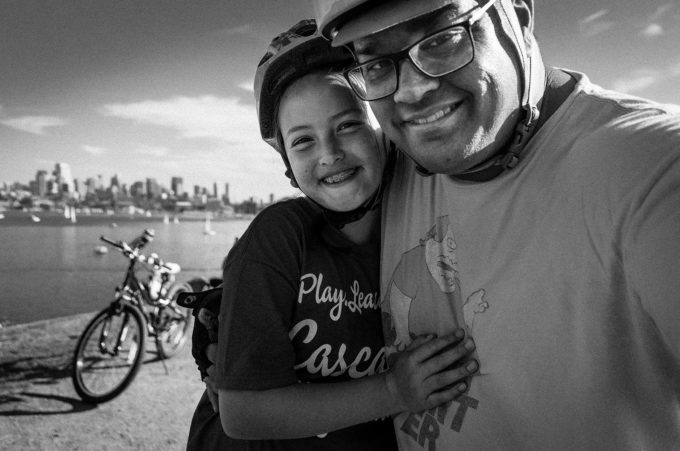


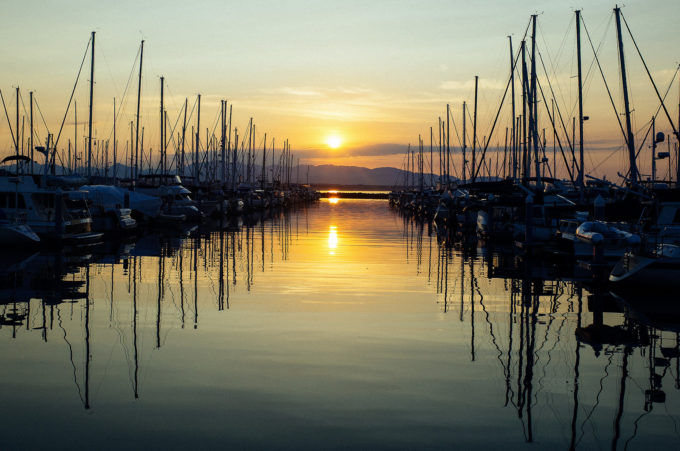
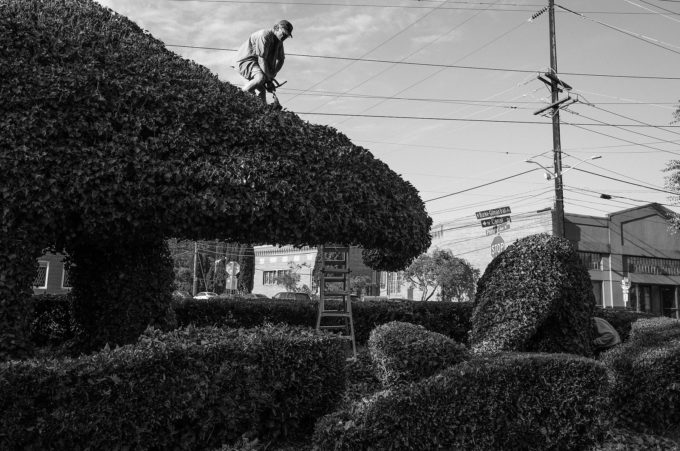
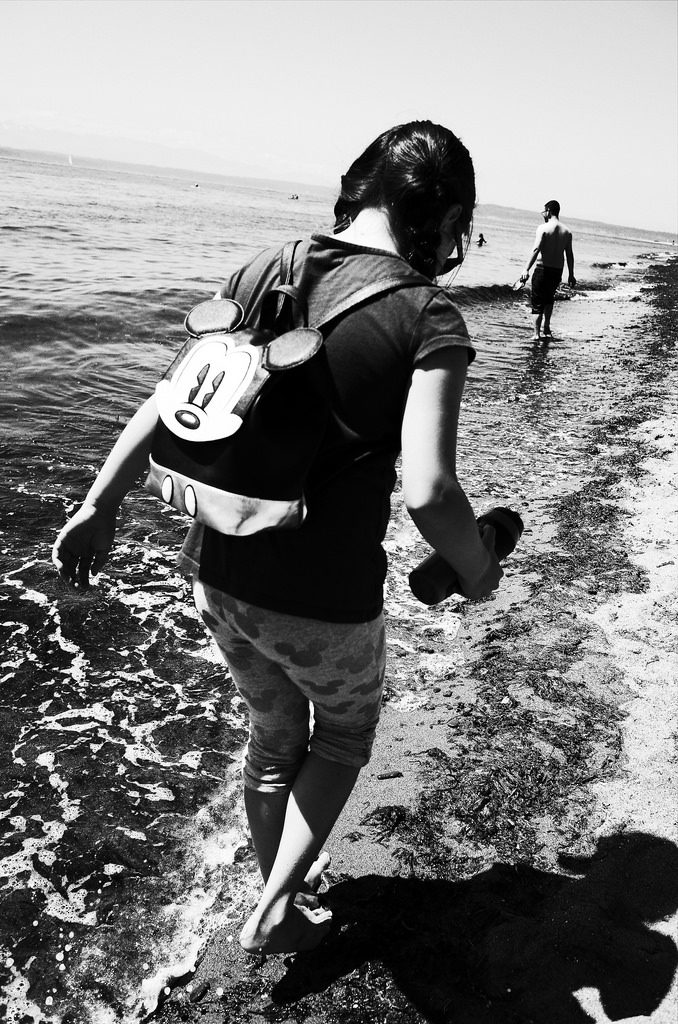
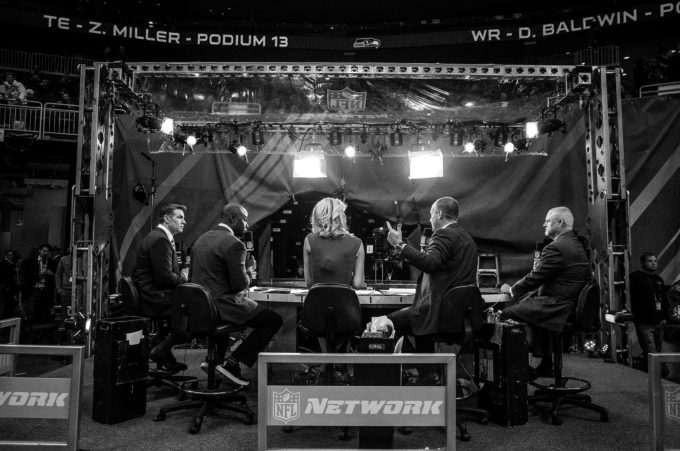
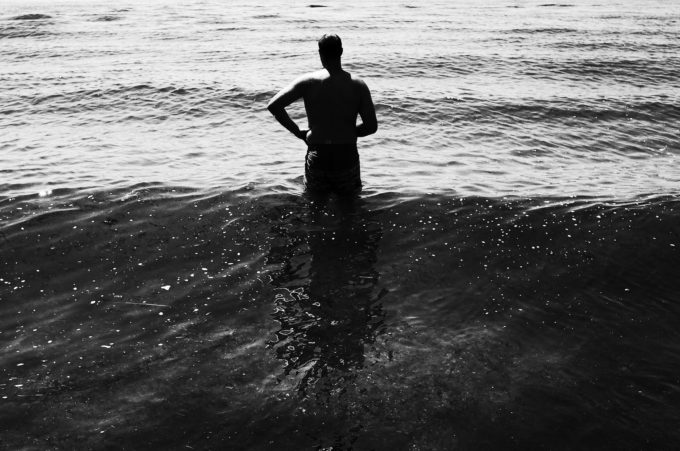
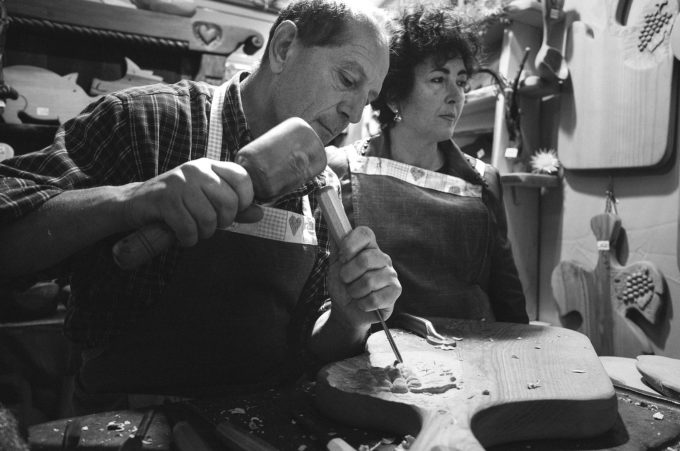
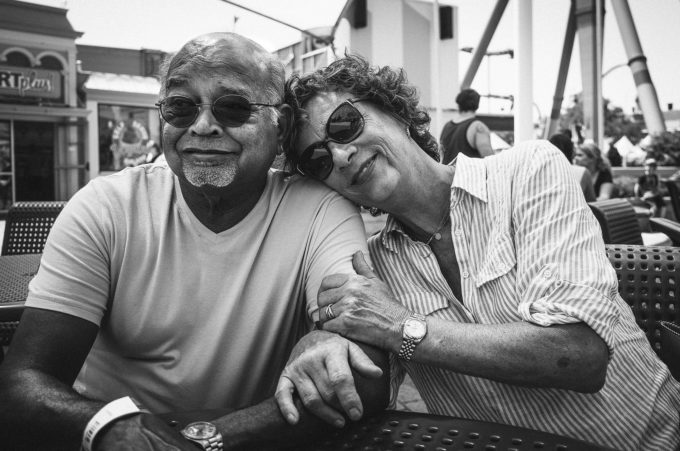


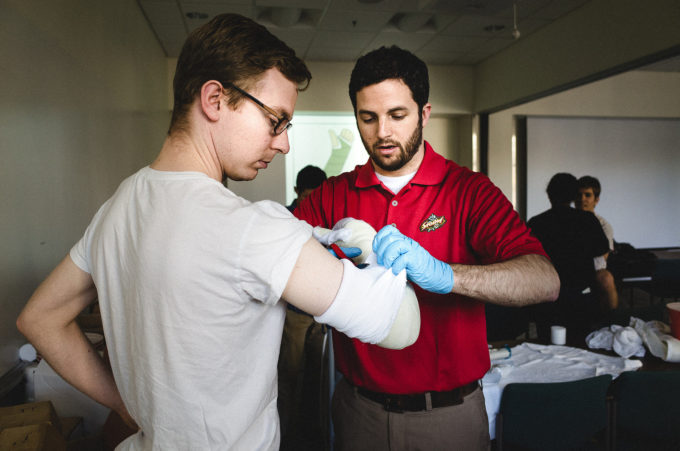
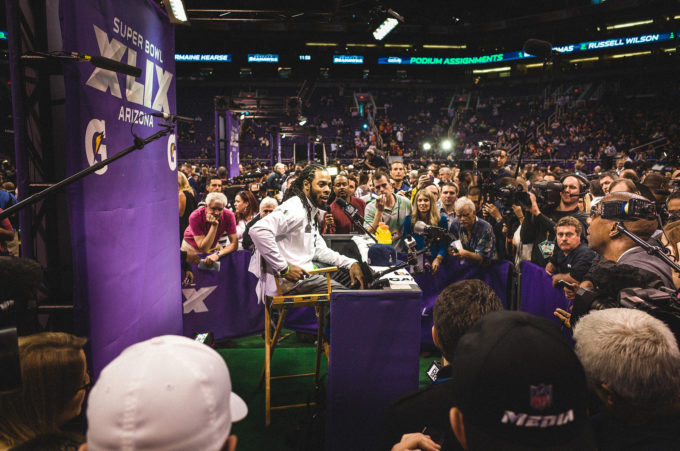
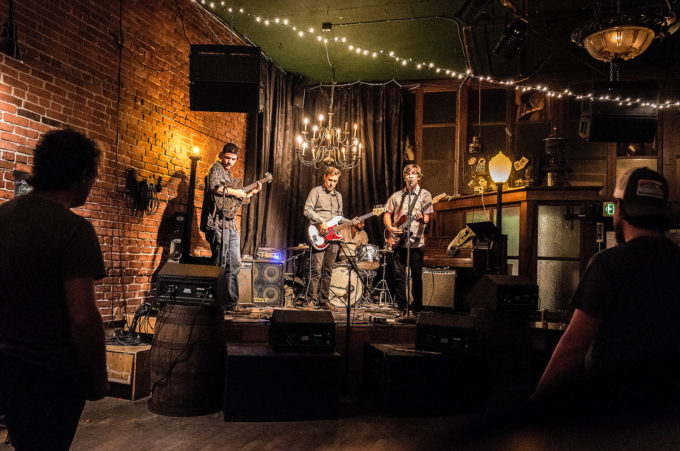


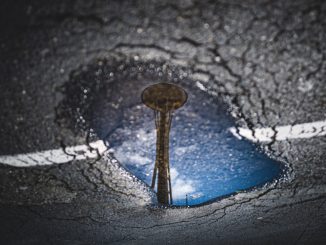
The original Ricoh GR digital has been with me since they were introduced. Just a fun, compact, great quality camera, with excellent image quality, with all the options needed on the camera physically and not in the menu, even if it is ‘only’ 16mp.
I love it with my MY1 custom configuration set to; BW, 1:1 format, and with the optional GW-3 21mm equivalent conversion lens. Being 1:1 and not taking full advantage of all the APS-C sensor, it is the one reason I wouldn’t mind a 24mp sensor [maybe we’ll see that if the Ricoh GR3 ever sees the light ;-]
Other than that a new GR with in-camera stabilisation and weather/dust sealing are the only things I wish for – oh, and a 50mm equivalent camera 😉
Besides the good optical GW-3 conversion lens – it really is good, and locks on and off quickly without juggling two lenses – the other option I use on this camera that is very useful (recommended) is a Voigtlander mini 28/35 finder on top for an optical to-the-face view. The frame lines even can be used ‘creatively’ with the conversion lens in the 1:1 format.
Has it been 4-years? The problems I’ve had are a sticky shutter release (making it now difficult to use), and dust. Don’t know if its worth it for cost to have these problems fixed now, may just get another new, or slightly used, or keep waiting for that next best GR.
It cost me about US100 to fix the problem. After repair, I trade in ( trade in value about US200) for a G7XMII. You are not the only one facing this shuttle/dust problem.
Great camera indeed!
When I’ve taken it for the first time the manager told me something like “this camera is over complicated, it will not suit for day-to-day shooting. It was designed for professional street photographers. …”
But this is really a universal piece of photography kit: for family shots, for holidays, for some professional activity and many more.
Great images and very thorough review. I wish there are more long term reviews of other camera. But then there wan’t that many camera that worth such a long term usage report. I used to own a GR and was my favorite but it kaput after less than 2 years and about 10K+- shots. Sadly I am not the only one facing the product quality issue.
Thanks for putting images which are warm and full of life. I am sick and tired of the high contrast bw pics with clarity slider pushed all the way to the right. GR has suffered a lot from the images of people crossing roads, people crossing billboards, people smoking and what not.
Spot-on review, Ashwin.
The B&W output is startling in its tonal gradation and lens resolution. The absence of an AA filter really allows this camera to punch way above its weight.
I agree, love Ashwins B&W shots here. They look fantastic with the GR-4, and dare I say, better than what comes out of the Leica Monochrom (latest version).
THanks, Steve! The Monochrom images are one of a kind, though I like you, I prefer the original’s output somewhat over the 246, though that is a nice one for IQ as well. ISO is better, but the GR gives the images a run for the money and one may never know from the images as to which image is from which camera….
Thanks, Ed! The BW output of the GR is lovely, and the images are impressively sharp (thanks to very accurate AF and the native sensor properties, as you have noted), and yeah, I totally agree, it’s a tiny powerhouse….I wish more of us embraced this form factor, since it allows for effective, nonthreatening photography. I have a very different experience with the D850, for example.
A great article with images that truly capture the essence of how this camera can be your companion.
I especially like BW images from the GR. Even straight out of the camera, they just look great.
I love the flexibility to configure the camera, allowing one to personalize it for your own use.
I enjoy snap focus, especially for street shooting or for that quick opportunity that shows up in an instant.
The only disappointment that I’ve had is the TAv mode, as the mode has resulted in very high ISO settings in my use. I realize it could be operator error, but I have missed some opportunities and have stopped using it.
Again, a great article that captures this camera.
Thank you, Robo, for your kind words. I too think the GR puts out some of the best BW images, and it does a fantastic job with its internal flash as well. Flexibility and configurability are key things that I did not focus on, so you are right on! I have not used TAv and will plan to avoid it.
I loved my GR but gave it to my son. The one area I didn’t think it was great in was low light. I replaced it with the little FujiFilm X-M1 plus their small 18 mm 2.0. I had Optical Finders for both cameras but rarely used them. Unfortunately I have a case on the X-M1 which makes it look quite a bit larger: https://images52.fotki.com/v1639/photos/4/43793/4909192/28finders-vi.jpg
What a wonderful article and photographs. You are truly a master. I dug out my GR invoice and discovered it is 4 years old as well. The time has flown by while using this little gem and it has functioned flawlessly over those four years. Again, thanks for posting.
Thank you, Mike! You are too kind. I just enjoy taking photos and capturing moments that are special to me. I hope to be able inspire others with the images to do the same.
Perfect for candid street photography, specially with its “snap” function (like using zone focusing). Shutter makes no sound
Yes, it’s a street photographer’s dream camera 🙂
Terrific photos, Ashwin!
And that camera seem to be a winner. I agree that 16Mpx is enough for almost any application. My personal maximum would be 24Mpx which leaves a bit more room to crop, but the cameras I own are both 16Mpx bodies.
If only we had more 4-year reviews. 😉 My favourite of all time is of course Overgaard’s M9 review, which is the mother of all camera reviews!
Thanks, Karim! The M9 review by Thorsten is unparalleled, for certain, and I agree that we rarely need all of the megapixels that the camera companies grant us.
Fantastic review. the ricoh gr has been my companion for 4 years now. Great when travelling (have the grds 3&4 as backup in case it would let me down) no issues except dust on sensor which was fixed rapidly here in France. I love the 28mm field of view something I miss with the leica X2. B&W conversion is a breeze in LR. I am always amazed with the results. I love that little camera, sold all my mirroless and RF system. What I like about the camera is how unobstrusive it is when travelling. You can talk to people before taking their photos. This camera is a great socializer as well. I would buy another one at once if it let me down. going to Thailand in 2 months time and I know I’ll pack the gr in my bag with a spare battery and sd card. That’s all I need and I know there will be many keepers when back home. Thanks again for this amazing and well deserved review.
Jean, great to hear from you and learn from your own experience. I like your description of the camera as a great socializer, and I would agree!
Inspiring pictures. The GR is possibly the best stealth camera (I even taped over the “GR” logo and it is easily mistaken as a smart phone. I often guess the framing with this camera without looking at the screen. Thanks for reminding me that I own a GR.
Thank you, good! I agree. Stealth mode has gotten me many great images
What a wonderful review! I really love the noise/grain in the pictures, is it ooc or added in post? And oh my God!! That lens .. I just .. blew away by it’s sharpness ..
Thank you for sharing. You inspired me to get one. Just like Ted Forbes (Art of Photography) and Mattias Burling says, it’s not about the gear but it’s about the gear at the same time. This kind of gear that develop us to be a better photographer, right? I’ll get mine asap ..
Thank you so much!
Thank, you, Naufal. Generally, I add grain as part of my processing, though in some of the BW’s, it’s coming from the camera.
I will have to learn more of Ted Forbes’ philosophy, as I concur 100% with that statement. While it’s not about the gear, to some degree the proper gear facilitates one’s creative vision and output.
Enjoy the GR. It’s really fantastic!
Great article and images. Wow. But even more so, you appear to be a very blessed man living life to the fullest. Kudos.
I am blessed. Hard work and dedication to one’s loved ones and to an enjoyable work life. The photography simply follows. Thank you for such kind words.
All my other brands of camera comes and goes, even the M240 gave way to the M10 but my Ricoh GR stay for being such a useful and convenient tool, never the best output in the stable but always good enough and trustworthy. I had to have the sensor cleaned once in 4 years for US$80 at the dealer, can’t complain at all. Thanks for an insightful and down to earth review.
Philip, I agree wholeheartedly. While the GR never really lays claim to the “best of” in any category other than compactness (as far as large sensor cameras are concerned), it’s alwayss useful, convenient, trustworthy, and packs a punch for its light weight and size.
I have always had GR’s amongst other cameras. Canon have dominated especially 5D’s. Like many my reading sight deteriorated and using a back screen became less practical so my last GR has not been used much recently and indeed even my OVF Canons are less easy. I have been tempted by mirrorless, in particular the OMD system but have yet to jump.
This article made me look up my GR images on lightroom and pick up my GR – as always, I find the following – incredibly sharp images – no stabilisation but with wide depth of field and that incredible lens the images are excellent. Colours do have a cast, but easily corrected. B&W is good and with a few tweaks is great. Ergonomics still very good. Size unmatched for quality. If I were to be in the product development team I would add a faster processor and ergonomically change … not much. However, I would build a GR family – 28mm Fixed but also a viewfinder version. Also……. the GR, with a small range of interchangeable prime lenses. 28mm eq, 50mm eq, 90mm eq.
Simon, thanks for your comments. I agree. a faster processor, better AF system, dust/weather sealing, and an OVF (if possible to keep the camera compact) would be the biggest desires for me. I am doubtful that ricoh or anyone could design lenses compact enough to be interchangeable on such a small camera. Hence, Olympus, Fujio and Sony cameras all sequentially larger cameras, and The GR has the same size APS-C sensor as Fuji and the Sony a6000 series cameras.
I have shot with many film and digital cameras over the decades (including the Ricoh GRS film camera with 28mm lens), and the Ricoh GR digital is probably my favorite of all of them, for many of the reasons Ashwin gives. I agree that the retractable lens makes the camera somewhat vulnerable to getting dust on the sensor, but in nearly 4 years of almost daily use, I had to send the camera for cleaning only one time, was without it 2 or 3 weeks, which seemed like forever, but that is the only time it happened. Other than that weakness, build quality is excellent. The form factor is brilliant–like the film GRS, the ratio of possible quality print size to camera size is amazing. I have had RAW files, which if spot-on with focus and exposure, were printed 100 cm in width, and looked very good at normal viewing distance for such a size. The b&w ones have a somewhat film-like grain. I like that the camera uses DNG for RAW, permitting some of the older post-processing software programs to be used if necessary. The macro function isn’t at all bad, although not super-close, but is very useful at times (and if you forget that you left the macro setting on, the camera will focus past the macro distance and give you a well-focused image of a distant subject, although focus takes a bit longer). The flash can indeed be adjusted to give a great balance of ambient and flash in many situations. (For indoor shots at parties, etc., best to use the shutter-priority mode for such shots and increase the shutter to something like 1/80 or 1/100–if you rely on Program mode, it will default to 1/40 second, leading to subject blur in some cases). My results with number of shots per battery haven’t been as good as Ashwin’s, but battery power is adequate, and batteries are quite small and you can slip a spare in the watch pocket of your jeans, etc., with the camera itself in your front jeans pocket. To protect from dust, I keep mine in a soft microfiber sunglasses pouch with a drawstring–adds almost no weight or bulk and the camera can be slipped out quickly for use. The wide angle attachment is good and sharp, although bulky. A stabilizer, and maybe an f/2.4 lens and/or better high ISO performance would be nice on the next model, although I get good shots at ISO 1600 and even 2000 when necessary. The high contrast b&w mode gives very good results with the right subjects. All in all, a joy of a camera to use!
Fantastic comment, Patrick. I agree that ISO 1600-3200 will do the trick for me if needed, and high contrast BW works in some settings.
Great to have another good article by you to read! Thanks. I’ve kept being tempted by this camera over the years, and your review doesn’t reduce the temptation! You don’t mention the dust issue which has cropped up in so many places (and is mentioned in one of the comments here). Does that mean that it hasn’t been an issue for you. For me to date it has been the bogey putting off purchase.
Thanks for reading, John, and I appreciate your words of encouragement. You are right that I have not had an issue with dust. However, my camera is generally always in a neoprene case until needed, stays in a pocket for the relevant shooting interval, and then it’s back in the case.
Now, I see what was missing in my images–an NFL team! Where can I get one?
As always, great write up, images, and insight.
hah, Will. That’s great. NFL teams are fun to watch 🙂 Thanks for your kind words of encouragement!
Great review and pictures as usual. Thank you very much!
I have got this camera for the last years (no Wi-Fi version) and absolutely love it. If I may add my thoughts:
– have a look at the Nikon Coolpix A if you are a Nikon shooter. Same format factor, possibly better colors, Nikon menu layout
– Ricoh has a problem with dust sealing with this model
– fantastic flash control
– fantastic and easy B&W conversions. Color needs more work starting from RAW (Lightroom)
– Poor man´s Leica Q
– pretty easy way to customize effects, colors, contrast… to mirror intended PP on computer
– you cannot emphasize its uniqueness enough: distorsion, pocketness, zone focusing (snap focus), personalization
– extras (21mm adapter, etc.) are expensive but very well built
– in-camera charging from computer (camera cannot be used while charging though)
– last but not least, aftermarket batteries are not as good as the original. You might need one spare battery if you use the flash a lot like me
– Ricoh has already said, that they won´t abandon the GR-line. So expect an update every 3-4 years
Again, the Ricoh GR is a fantastic photographic tool. If mine broke up, I would buy another one the same day.
Cheers!
Diegaulle
Thanks for the kind words, and thank you for providing your own thoughts, Diegaulle. I agree with everything you have added. I will say that while it may be a “cheap Q”, it’s really a different camera. The Q is amazing, but it is M camera sized, and the GR is so much smaller, lending itself to different use (at least for me). I have heard of the dust issue, but I never experienced it with either camera. Something to certainly watch for.
thank you for the article.
I am amazed by your flickr account. you have used so many camera and lenses, it is mind-boggling! and your images are amazing, whether it is in the fuji albums or leica Monochrome or whatever album I pick.
Inspiring and thanks for sharing
ps how you you squeeze out all the time besides you medical hours? baffles me, I don’t get my raw files developed in time…
Thanks, kreislauf. I do enjoy shooting with different camera gear and seeing how it affects my shooting style. I also love to shoot and use these cameras. Cameras and photography are my primary hobby outside of medicine, and I process my images quite rapidly nowadays. It’s all so much fun 🙂
Ashwin: Great article! I love how detailed and thorough your write up was. And of course the images were wonderful examples of what one can do with the camera. I have a GR but I too often forget about it. I need to carry it around with me much more. Thanks for renewing my own interest in the Ricoh.
THank you, Mathew. I find myself forgetting about the GR from time to time as well, as it is always in my work bag. I am glad that the article serves as a reminder of what a great tool it can be.
I used to own a Nikon Coolpix A. Sold it due to lack of use. I missed that camera but decided to buy a Ricoh GR limited edition instead (the green one). I love the camera look and how thin it is compared to Coolpix A. But the colors it produced somehow just didn’t click to me, and the B&W also felt bland. Sold it to a very happy owner, since it completely looks like new. Then I bought another Coolpix A, and this time I’m keeping it.
Hi ATP, the Coolpix A is a very similar camera, maybe the same camera with different firmware. Given that there was only 1 run of the camera, there are less of the camera out there, and I agree, it’s lovely as well.
Bravo Ashwin, you are luminary. I have had this camera with me all over the world and in the evenings especially when My M may be in the room I throw this camera in my pocket. I have to hand it to Kim and Thein for turning me on to the camera in the first place. Sometimes, “shit just works” so why change it. Your review was insightful and because of you I think I am going to buy a spare one to keep forever. Thanks for your insights. Happy New Year. Louis
Louis, great to hear from you! I too spent some time reading Eric and Ming’s posts again as I prepared this article. Their reviews clearly show the value of such a camera, and yes, sometimes it just works. It’s why I am keeping the GR2 for the forseeable future, especially as it is unclear if and when Ricoh/Pentax would refresh such a line and if the refresh is really worth it…
I still have a GRD1 and a GRD2. Both of them very nice and interesting. Issues: 2 lcd screen replacements (they are truly pocketable but at a price), problems with retract system and AF system in the GRD2. The GRD1 color is small ccd sensor, rash and “primitive”, lots of clipped highlights. Both of them have wonderful B&W, not sharp as yours but “à la Moriyama”. Improvements that GR1 and 2 (APSC) lack: weather sealing and sensor dust. They are powerful toys. Very nice pictures, by the way. For me, a GR and a cellphone is all I need these days. They are the portable watercolor set of contemporary photography. Old (5 Y) good cellphone cameras are very interesting too. Vintage digital rocks more than even X1D to me. I’ll get an ASPC GR when conveniently vintaged. Cheers and Happy Holydays to all of you from Madrid.
Hi jp, I am sorry to hear for the LCD replacements and with the GRD’s glitches. I agree that weather and dust seeling, and a modernized sensor preserving the values inherent in the current sensors, would be great. I have been lucky to own 2 cameras without any issues, and I am enjoying the files for what they are. Like you, I think the images are wonderful in BW conversion. Happy holidays to you as well!
I have the Nikon A and I can appreciate much of your enthusiasm. I did get a “nice” spot of dust recently and I must say it discourages me to use the camera. Does anybody have a similar challenge with the ricoh?Any solution?
As someone said the retractible lens mechanism is prone to dust. I don´t have a case, cloth, bag whatsoever to protect the camera. I always carry it in dirty jeans pockets and it was a matter of time until I would get dust on the sensor. There is not a lot of light where I live and the spots remain invisible until f8. The fact that I misuse my GR drives me to take it everywhere with me. Forget about the dust. Just shoot.
Fantastic and honest review for this fantastic and capable camera.
I love mine too !
Thank you, Jean-Paul!
Great review Ashwin – I need something just like this. Thank you for posting this and I hope to make the next Leica meeting in Seattle! :]
-Murph
Murph, it’ll be great to see you at the next SLUG meet up!
Thanks Ashwin. Great write-up!
Thank you!
I’ve been waiting for years for the release of an new model GR ,that was rumored to be out at any time! Please! Please! I’ve loved the film versions and used the them all over the world because of their size and quality.
I’ll be the first in line to buy one.
P.S. > Make 2 or 3 versions in different focal lengths.
Thanks for introducing me to this brand and model. Following this read, I discovered a previously unknown camera brand and its evolution of models. As a newbie in the digital space, what’s your opinion of a reach back to the Ricoh GR DIGITAL IV vs. the GR II?
Go for the last version with the bigger sensor!
Thanks for the guidance! With peace and joy, Deborah
Hi Deborah, the older GRD IV has a smaller sensor, and is otherwise very capable. It is smaller by a touch compared ot the GRII, but I think the larger sensor of the GR/GRII win out, especially since the price difference is not huge.
Thanks for take the time to reply. Your article really intrigued me, and it reminded me what I loved about photography back in my early years— high contrast b/w images. Hope to procure a camera and begin shooting again.
Great shots, I agree that 16 mp can be “just right” for many uses, especially on a APS-C sized sensor. The noise (similar to grain), contrast, and general “feel” of the image is very similar to film. I shot with a Fuji XE-2, X100S, and then xpro-2. The first 2 are both 16mp APS-C, very pleasing, particularly for family and “people” shots. No AA filter resulted in images that we’re sometimes hard to discern from my 36mp Nikon D800e. Now that I shoot the xpro-2 at 24mp, I feel it has lost some of the magic of the earlier 16mp cameras. Image quality is great, but almost too smooth, losing some of the warmth that the earlier cameras (and yes, even film) offered. I still love shooting film for this reason, often carry an old Nikon 35ti. Great review of the Ricoh, and great images — really makes me want to try one. Thanks for sharing!
Thanks, PJ. I love the feel of the GR shots as well, and while it’s hard for me to compare to film, I do enjoy the grit in the images when they get gritty. I still love film, and you have a dandy one with the 35Ti. I would love one of those, a 28ti, or even a Contax T3.
Looking at any amazing GR b/w image, including yours, I always feel they possess the autance of an old-school b/w neg processed in a fine dilution of Agfa Rodinol. Acutance that will cut like a knife! I’d be curious; from the beginning of your venture with the GR to present day, have you used the same raw processor, and how have you refined your raw processing of these images (specifically the b/w)? Thanks for the enlightening review!
Thanks, Chris. I have used LR (through its upgrade) to process all of my files with the GR. I find LR to do a nice job with the GR BW conversions.
Great Article!
I purchased a used GRD4 to find out what the GR hype was about and I can’t put it down. My images have that 35mm Tri-X look and feel that I thought I had given up years ago. I’ve only heard Great things about the GR2. I’ll make the upgrade when my smaller sensor GR dies.
Ashwin hangin’ with Macklemore, sweet!
Seal who?..
😉
haha. But I doubt Macklemore is into cameras like Seal, who’s a great supporter of all things photographic and remains a good friend in photography to this day. I am fairly certain that Seal keeps a GR around as well :).
Thanks a lot for this very positive review. I am an avid Ricoh user, having GXR with 28 and 50 units ( 50 macro not very fast focusing lens but is unique having a leaf shutter), m-units and of course GR. I second every word you said about that camera. It`s the only pocketable APS-C camera I can have in my inner dinner jacket pocket without bulge. Reasonable solid although I did broke LCD, my fault. I do like 21 wide adapter, very good quality, best at 5.6 for those extra angles. I use it with a filter adopter which allows me to bayonet it on and of. What I would like? Maybe a flip able LCD at few extra mm of thickness, a small remote for those selfie stick, above head, round the corner, down the drain shots, smartphones too cumbersome. Retracting barrel makes it for compactness but in dusty or rainy environment I use a filter adopter with, of course filter on, that keeps the inner of lens barrel protected. All in all I`m really happy with GR and wish Ricoh would use more time developing GR concept. Perhaps with ruggedised all-weather model. A GR with 50mm eq. would be icing on cake too. Or one with 21mm eq. Or both.
Thanks for the review. I remember when the camera came out the b&w images were highly touted. I can see from your shots this was justified. Really interesting shots. Thanks for sharing.
Thank you, Duncan!
I have the first digital GR D, amazing in size and very easy to use. Not really great IQ but the b/w output is very nice.
Thank you. Sorry I sold mine. Easy to use, and sharp pictures. = I’ll be buying another!
Jazz1, great idea : )…Sometimes it’s just the recognition that it’s still such a wonderful camera.